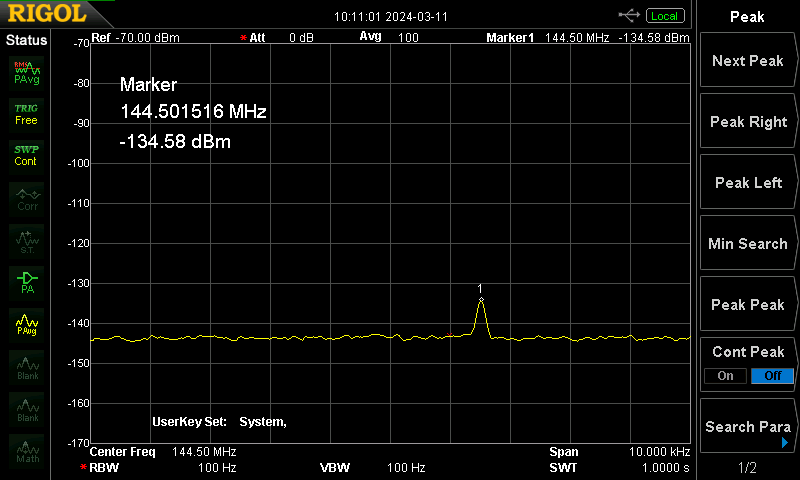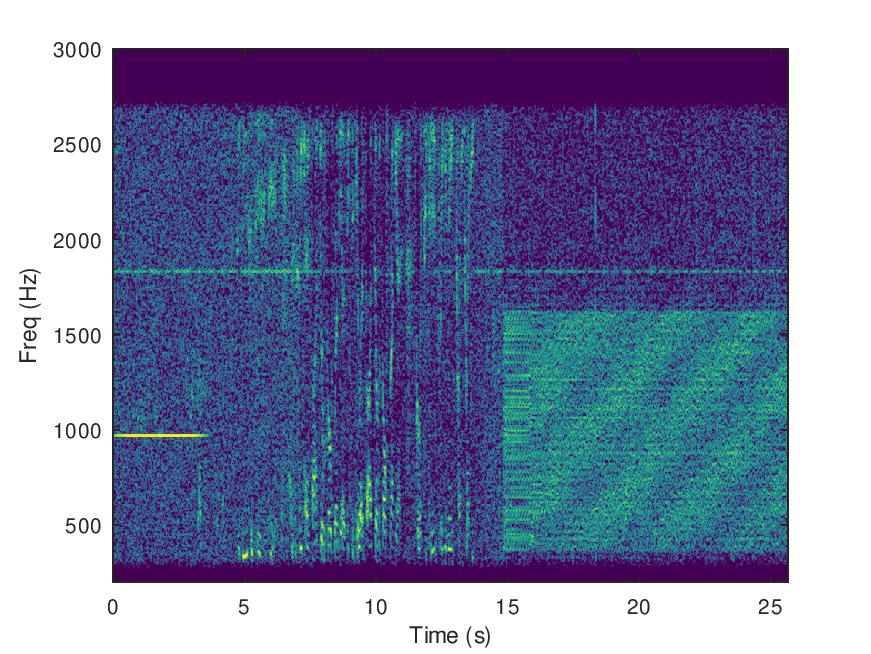This month was spent building up the “classical” DSP support code around the Radio Autoencoder, so I could test it over the air using real radio signals. Can we repeat the impressive low SNR results from simulation over real radio channels? This meant coding up an OFDM modem in PyTorch, lots of testing, and a bunch of support scripts to drive the radio hardware.
The algorithms we developed last year on improving FreeDV acquisition and designing filters came in handy, especially at the low SNRs required for this work.
The first test was “over the cable” (OTC) at VHF (144.5 MHz) using a HackRF transmitter, switchable attenuator as the “channel”, and a RTLSDR as the receiver. The noise (N) is injected by the physical properties (noise figure) of the RTLSDR receiver, so the S/N is controllable by the level (S) presented by the switchable attenuator. My calculations indicated it should work around the -135dBm level, and sure enough it did – sounding just like the simulations (see Feb 2024 for examples). This was a great confidence boost as it’s hard to argue with real world noise, but easy to mess up the calibration of noise simulated by software.
For comparison a narrow band FM signal will fall over at around -120dBm, and a first generation digital VHF radio (using proprietary speech codecs) perhaps a few dB lower. Although to be fair the digital VHF systems also transmit ancillary digital data at the same time, which consumes some of their power and bandwidth.

Next step was HF radio, a somewhat tougher channel. This required quite a bit more work on the OFDM sync algorithms, but eventually I was ready to transmit a signal using my HF radio. I sent a 5W signal over a 500km HF path to a KiwiSDR, and passed the received signal through the Radio Autoencoder system. Much to my surprise, it worked first time! Good quality audio over several different paths and channel types, up to 2000 km away. It seems quite robust to the channels I have tested so far, including NVIS, EMI corrupted receivers, and SNRs below 0dB.


These are encouraging results for the Radio Autoencoder. I’m now pondering next steps. I think it makes sense to test the system with some more samples and over different channels. Plus so many things we could do with the Machine Learning side, like using ML instead of classical DSP for synchronisation, and trying our PAPR reduction system over the air. Also, at some point we need a C port so this can be used in real time by anyone.
FreeDATA Update
Part of our ARDC grant activities is to support the FreeDATA project. Simon and team have recently completed a major re-write and FreeDATA is back on the air. This month I’ve been working with Simon on a faster modem waveform for “ACK” packets, that will help speed up the FreeDATA protocol. I’m also pleased to see FreeDATA working over real HF channels, including this 7 hour 1.44Mbyte file transfer over an 800km path.
that was FANTASTIC audio, especially, the LAST sample!!!! I cannot wait to use it on hf when it’s available to put THAT version, of freeDV on my own radio!!!! 73,
Trippy, AC8S